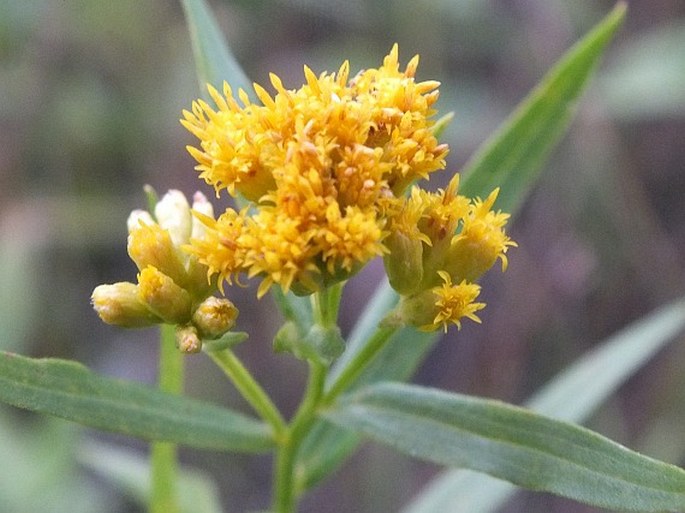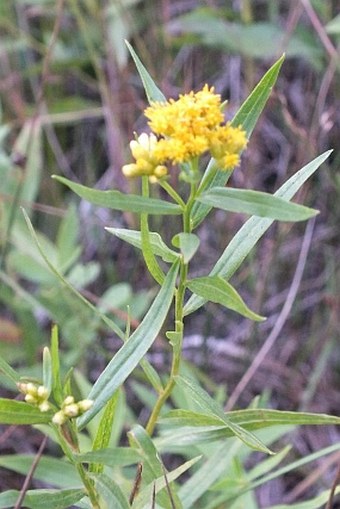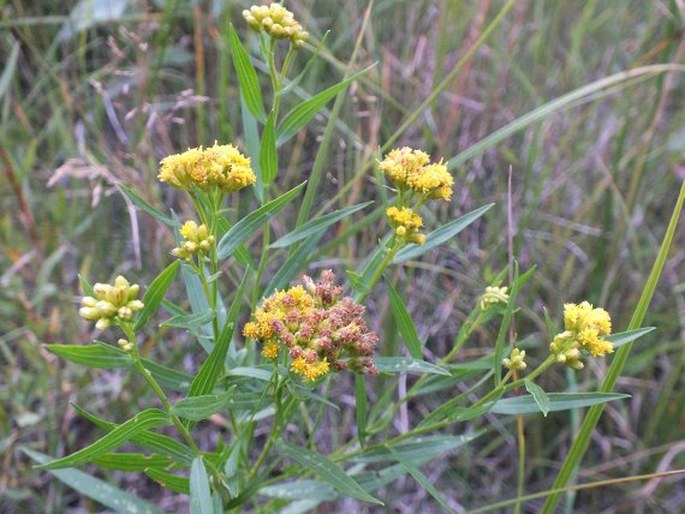Syn.: Aster euthamia Kuntze, Aster graminifolius (L.) Kuntze, Chrysocoma graminifolia L., Chrysocoma virginiana hort. ex DC., Diplemium carolinianum Raf., Erigeron carolinianus L., Euthamia caroliniana (L.) Greene ex Porter et Britton, Euthamia fastigiata Bush, Euthamia floribunda Greene, Euthamia galetorum Greene, Euthamia hirtella Greene, Euthamia hirtipes (Fernald) Sieren, Euthamia media Greene, Euthamia microcephala (Nutt.) Greene, Euthamia microphylla Greene, Euthamia minor (Michx.) Greene, Euthamia nuttallii Greene, Euthamia remota Greene, Euthamia tenuifolia (Pursh) Nutt., Solidago galetorum (Greene) Friesner, Solidago graminifolia (L.) Salisb., Solidago lanceolata L., Solidago microcephala (Greene) Bush, Solidago minor (Michx.) Fernald, Solidago moseleyi Fernald, Solidago tenuifolia Pursh
Family: Asteraceae Bercht. et J. Presl

Distribution: North American species covering most of the continent. Absent in Alaska, Nunavut, Nebraska, Kansas, Arkansas, South Carolina, Georgia, Florida and western states of Oregon, California, Nevada, Utah and Arizona. Naturalized in Europe and Asia.
Ecology: Open fields, along streams, close to water, 0-1500 m. Blooms July to September.

Description: Perennial herb, 30–150 cm tall. Stems erect, usually branched close to the top, smooth to minutely hirsute. Leaves alternate, sessile, linear to narrowly lanceolate, 40–130 × 3–12 mm, reduced in size toward the top, 3–5-nerved, smooth or minutely hirsute including margins. Inflorescence arranged in flat-top cymes, 12–50-flowered, terminal one larger than on branches; involucres campanulate, 3–5 mm, bracts in several rows, ovate to oblong, apices obtuse, lower one green, changing to yellow to the top; ray florets 15–25, yellow; disc florets 5–10, corollas about 3 mm, yellow. Fruit is an achene, pappus of brownish bristles.
Note: The genus Euthamia includes 5 species, which occur in North America and Mexico.



These images were taken in Canada, Alberta, Calgary, Griffith Woods Park (August 10, 2015).


